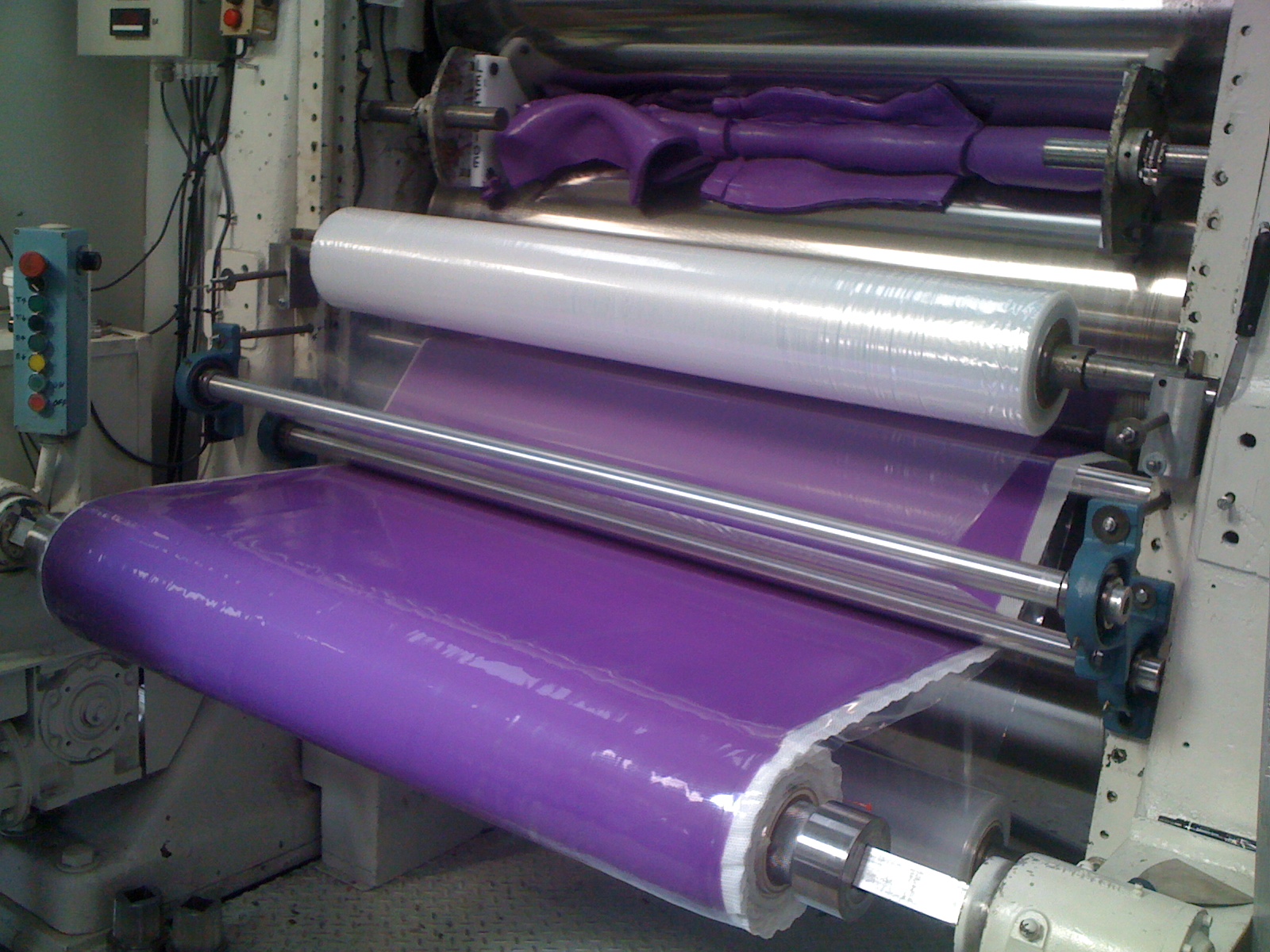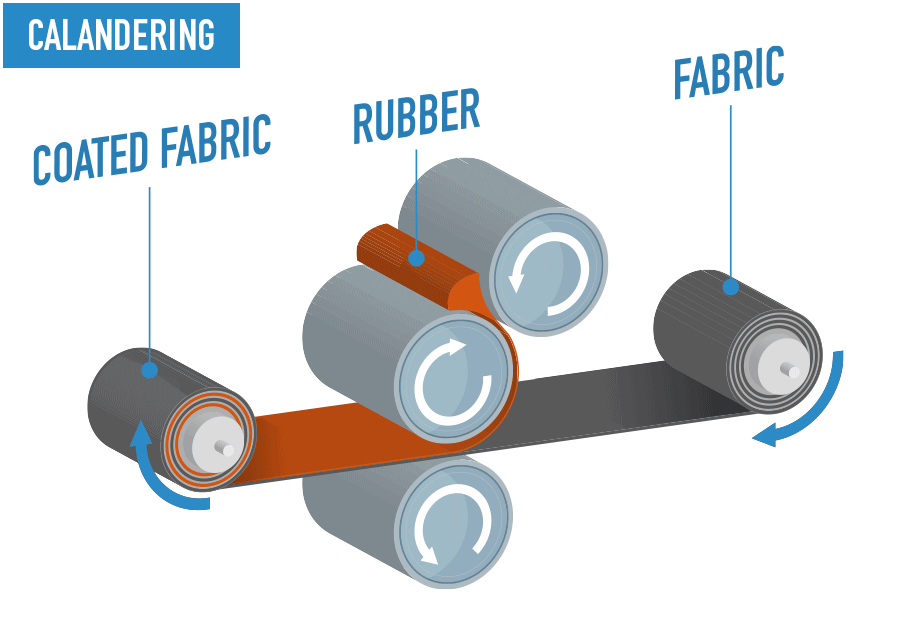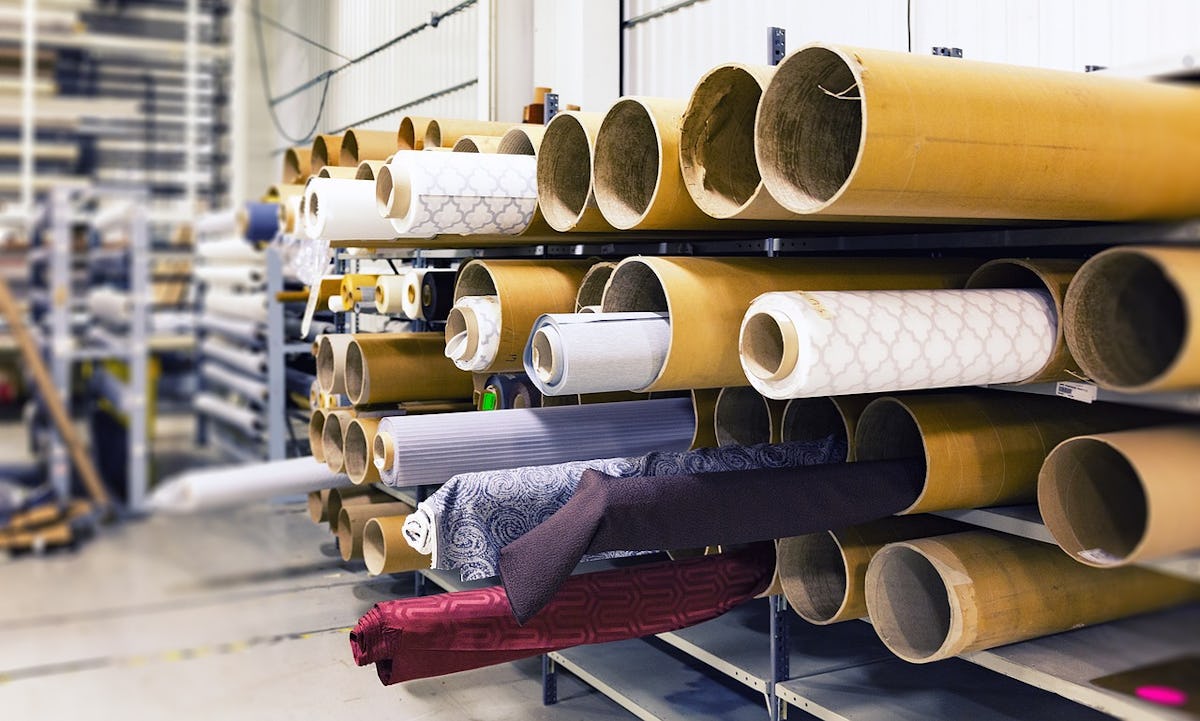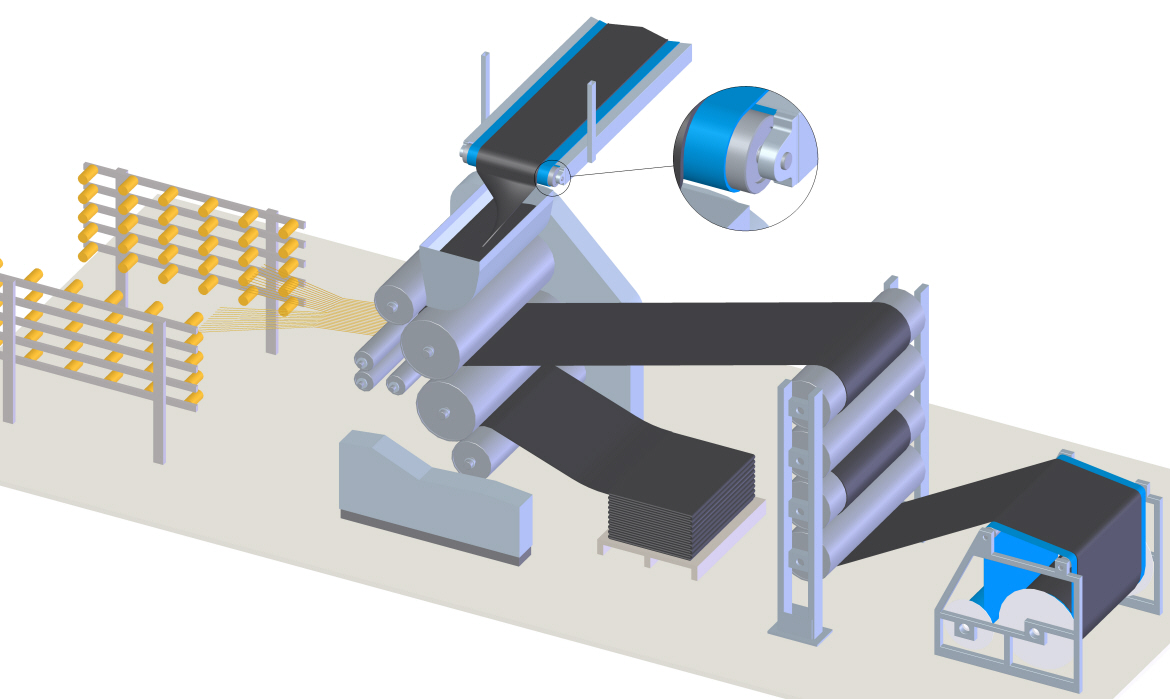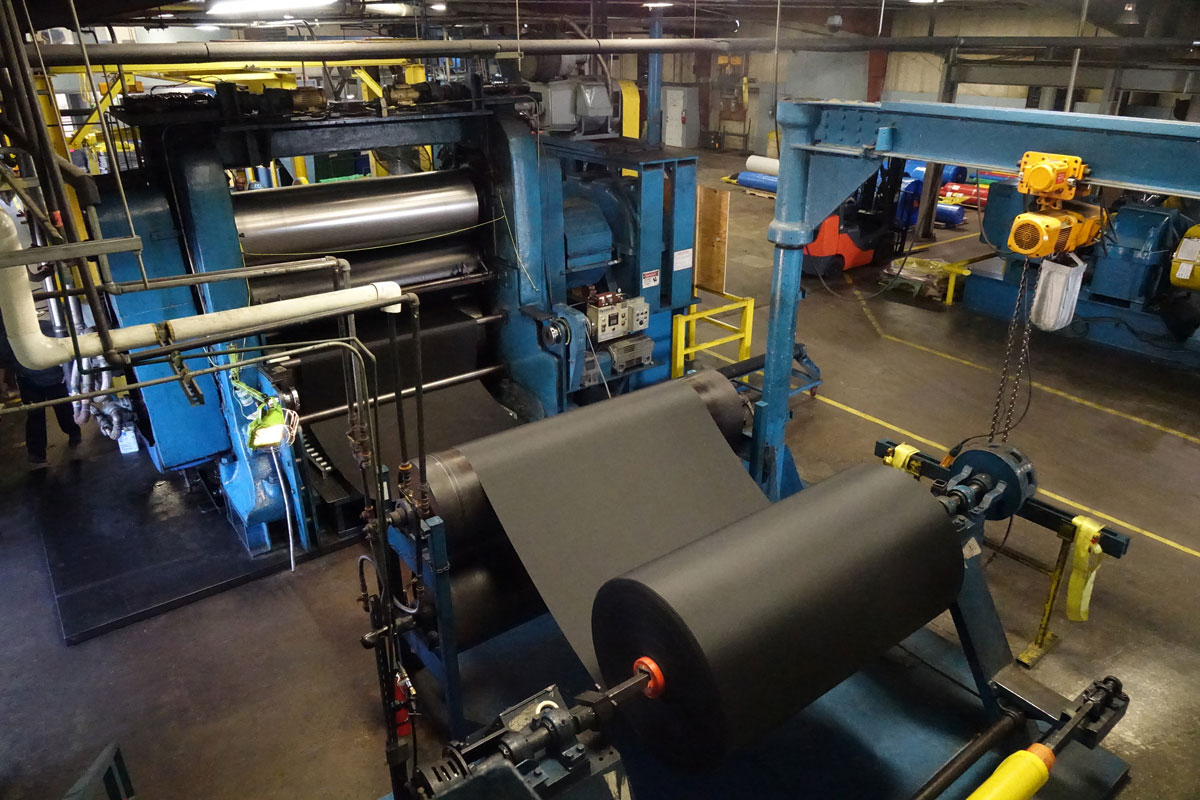Calendering Of Fabric - Web 3 main elements of calendering. Web calendering in textile may simply be achieved while passing the textile substrate in between two heated drums or. With textiles, fabric is passed between calender. Web calender, machine that has wide application in the finishing of textile fabrics, the production of vinyl plastic sheeting, rubber sheeting, coated fabrics, and the manufacture of paper. Web calendering of textiles is a finishing process used to smooth, coat, or thin a material. Web calendering is applied to fabrics in which a smooth, flat surface is desirable, such as most cottons, many linens and silks, and. Web calendering mechanical finishing process in which fabric is passed between two rollers (one metal and one cotton fabric) under. Web calendering, process of smoothing and compressing a material (notably paper) during production by passing a single. Web calendering is a process whereby fabric is compressed by passing it between two or more rollers under. Web common types of calendering machine used in the textile industry include:
Calendering process in textile
Web common types of calendering machine used in the textile industry include: A suitable degree of dampness; Fabric thickness gets reduced after the calendaring process. Web calendering in textile may simply be achieved while passing the textile substrate in between two heated drums or. Web calendering is a process whereby fabric is compressed by passing it between two or more.
Calendering for Filter Cloth Finishing Micronics Inc
A suitable degree of dampness. Web common types of calendering machine used in the textile industry include: Web calendering is applied to fabrics in which a smooth, flat surface is desirable, such as most cottons, many linens and silks, and. During calendering rolls of the material are passed between several. Web silk finishing calender uses a special type of soft.
Calendered Fabric
Web calendering of textiles is a finishing process used to smooth, coat, or thin a material. A suitable degree of dampness. Web calendering in textile may simply be achieved while passing the textile substrate in between two heated drums or. Web silk finishing calender uses a special type of soft cylindrical bowl having less elastic modulus as compared to soft..
Home Colmant Coated Fabrics
Web the main function of calendering is to provide a smooth fabric surface, light lustre, and improved hand. Web calendering is a mechanical finishing process used on cloth where fabric is folded in half and passed under rollers. Web calendering is a process whereby fabric is compressed by passing it between two or more rollers under. Web calendering is a.
calendaring Off 73 www.sales.sp.gov.br
The lustre of the fabric gets improved. With textiles, fabric is passed between calender. With textiles, the fabric is. Web the main function of calendering is to provide a smooth fabric surface, light lustre, and improved hand. Web calendering mechanical finishing process in which fabric is passed between two rollers (one metal and one cotton fabric) under.
Machinio Newest Categories Calendering & Carding
With textiles, the fabric is. Web calendering is a mechanical finishing process used on cloth where fabric is folded in half and passed under rollers. The lustre of the fabric gets improved. With textiles, fabric is passed between calender. Web the main function of calendering is to provide a smooth fabric surface, light lustre, and improved hand.
calendaring Off 73 www.sales.sp.gov.br
Web the main function of calendering is to provide a smooth fabric surface, light lustre, and improved hand. Web calendering of textiles is a finishing process used to smooth, coat, or thin a material. Web calendering is a finishing process applied to textiles and paper. Web calendering, process of smoothing and compressing a material (notably paper) during production by passing.
Tyre Manufacturing Ammeraal Beltech
This flattens the fabric, seals the weave, and. Web calendering is a finishing process applied to textiles and paper. Web calendering mechanical finishing process in which fabric is passed between two rollers (one metal and one cotton fabric) under. Web the main function of calendering is to provide a smooth fabric surface, light lustre, and improved hand. A suitable degree.
CSI Calendering, Inc Textiles
Web calendering of textiles is a finishing process used to smooth, coat, or thin a material. Web calendering is applied to fabrics in which a smooth, flat surface is desirable, such as most cottons, many linens and silks, and. Web calendering, process of smoothing and compressing a material (notably paper) during production by passing a single. A suitable degree of.
Calendering A level Fashion at St Phils.
Web 3 main elements of calendering. Web silk finishing calender uses a special type of soft cylindrical bowl having less elastic modulus as compared to soft. Web calendering of textiles is a finishing process used to smooth, coat, or thin a material. Web calendering is a process whereby fabric is compressed by passing it between two or more rollers under..
Web calendering is a process whereby fabric is compressed by passing it between two or more rollers under. Web calendering, process of smoothing and compressing a material (notably paper) during production by passing a single. This flattens the fabric, seals the weave, and. The lustre of the fabric gets improved. Web common types of calendering machine used in the textile industry include: Web calender, machine that has wide application in the finishing of textile fabrics, the production of vinyl plastic sheeting, rubber sheeting, coated fabrics, and the manufacture of paper. Web the main function of calendering is to provide a smooth fabric surface, light lustre, and improved hand. A suitable degree of dampness; Web calendering is a mechanical finishing process used on cloth where fabric is folded in half and passed under rollers. With textiles, the fabric is. Web 3 main elements of calendering. Web calendering mechanical finishing process in which fabric is passed between two rollers (one metal and one cotton fabric) under. Web calendering in textile may simply be achieved while passing the textile substrate in between two heated drums or. Fabric thickness gets reduced after the calendaring process. With textiles, fabric is passed between calender. Web calendering is a process by which fabric ran through hot, heavy rollers at the mill. Web calendering is a finishing process applied to textiles and paper. Web silk finishing calender uses a special type of soft cylindrical bowl having less elastic modulus as compared to soft. Web calendering of textiles is a finishing process used to smooth, coat, or thin a material. During calendering rolls of the material are passed between several.
Web Calendering Is A Process By Which Fabric Ran Through Hot, Heavy Rollers At The Mill.
Web silk finishing calender uses a special type of soft cylindrical bowl having less elastic modulus as compared to soft. Web calendering is a finishing process applied to textiles and paper. Web calendering is applied to fabrics in which a smooth, flat surface is desirable, such as most cottons, many linens and silks, and. The lustre of the fabric gets improved.
With Textiles, Fabric Is Passed Between Calender.
A suitable degree of dampness. Web calendering of textiles is a finishing process used to smooth, coat, or thin a material. Web 3 main elements of calendering. Web the main function of calendering is to provide a smooth fabric surface, light lustre, and improved hand.
During Calendering Rolls Of The Material Are Passed Between Several.
A suitable degree of dampness; This flattens the fabric, seals the weave, and. Web calendering is a mechanical finishing process used on cloth where fabric is folded in half and passed under rollers. Web calendering, process of smoothing and compressing a material (notably paper) during production by passing a single.
Web Calendering Is A Process Whereby Fabric Is Compressed By Passing It Between Two Or More Rollers Under.
Web common types of calendering machine used in the textile industry include: Web calendering in textile may simply be achieved while passing the textile substrate in between two heated drums or. Web calendering mechanical finishing process in which fabric is passed between two rollers (one metal and one cotton fabric) under. Fabric thickness gets reduced after the calendaring process.



